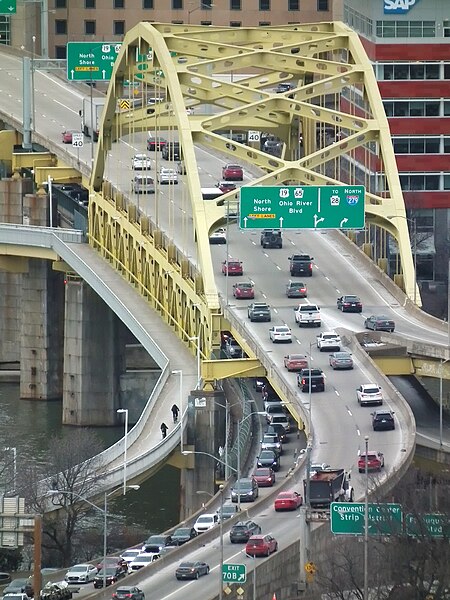
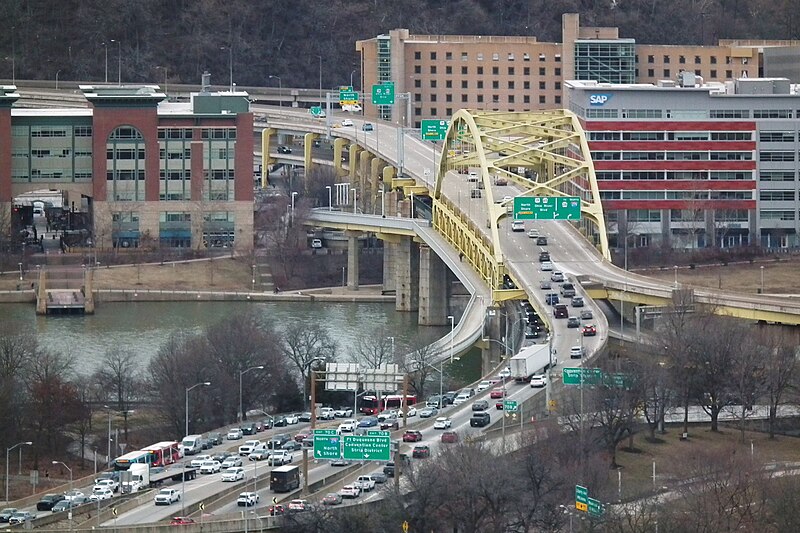

A view across the Bellefield Bridge toward the Carnegie Library in Oakland. The bridge is still there, but you can’t see it. The hollow was filled in with the bridge still in place, and the Mary Schenley Memorial Fountain sits on top of the buried bridge now.
This view shows the library building before the enormous expansion in 1907. The two towers were victims of the expansion—but also perhaps victims of some negative criticism. The building in general—designed by Longfellow, Alden & Harlow—was highly praised, but some critics thought the towers a bit embarrassing. When Alden & Harlow (Longfellow had decided to stay in Boston) designed the new addition, the towers came down.

The picture above required a lot of manipulation: it was built from three separate photographs at different exposures in order to capture the detail in both the light and misty distance and the dark railroad ties in the foreground. The result may look a little artificial, but it makes a good illustration of the bridge. The pictures below, with no relevant details in the foreground, are less manipulated.



The Rachel Carson or Ninth Street Bridge, Pittsburgh, seen from six floors up on Liberty Avenue.
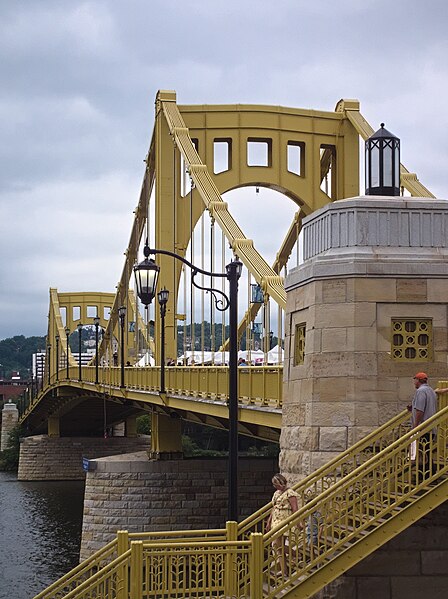
The Ninth Street Bridge, now named for our world-changing naturalist Rachel Carson, is the third of the Three Sisters going by street numbers, but it was the first to be built. Here we see it during the recent Three Rivers Arts Festival, when the artists’ market spilled outward across its entire length.

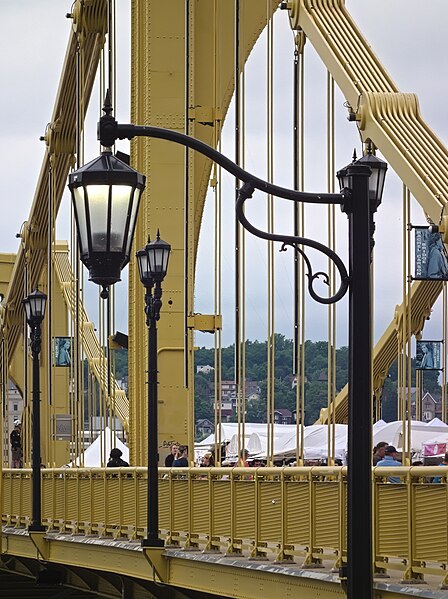

It is old Pa Pitt’s belief that every work of architecture or engineering ought to bear a permanent record of all the information a future historian will want.

The Three Sisters bridges—Sixth Street, Seventh Street, and Ninth Street—were built between 1925 and 1928 after the War Department determined that the existing bridges over the Allegheny were too low and impeded navigation. As engineering feats they are technically interesting: they had to be made self-anchoring to avoid tearing out huge chunks of valuable property downtown. As architecture they are memorable, and not just because this is the only place in the world where you can see three identical suspension bridges side by side. The Sixth Street Bridge, now named for Pirates star and philanthropist Roberto Clemente, was the most beautiful steel bridge built in America in 1928.
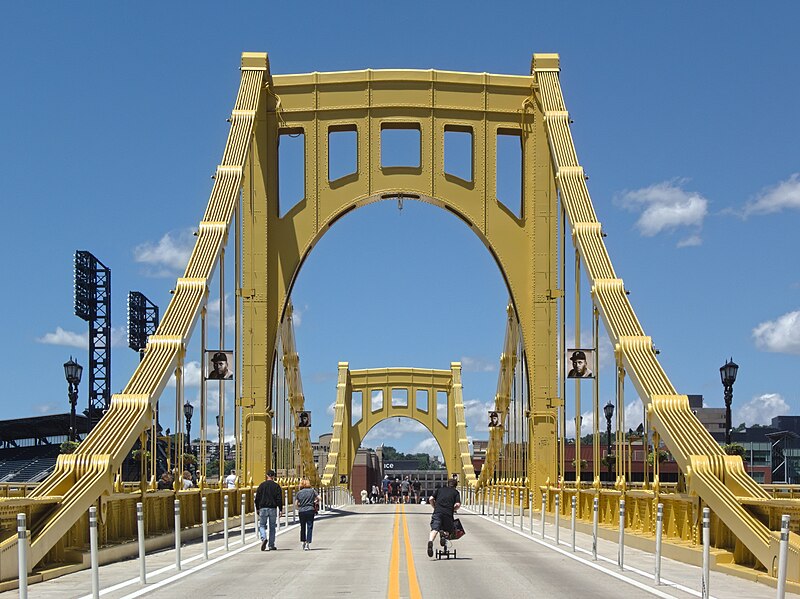
On baseball days the bridge is closed to motor vehicles, which allows a gentleman in a powdered wig to stand right in the middle of it with his Kodak.

The architect was Stanley Roush, the king of public works in Pittsburgh at the time. You may think Father Pitt was being a bit hyperbolic in calling this the most beautiful steel bridge of 1928, but he was merely reading off its credentials.
